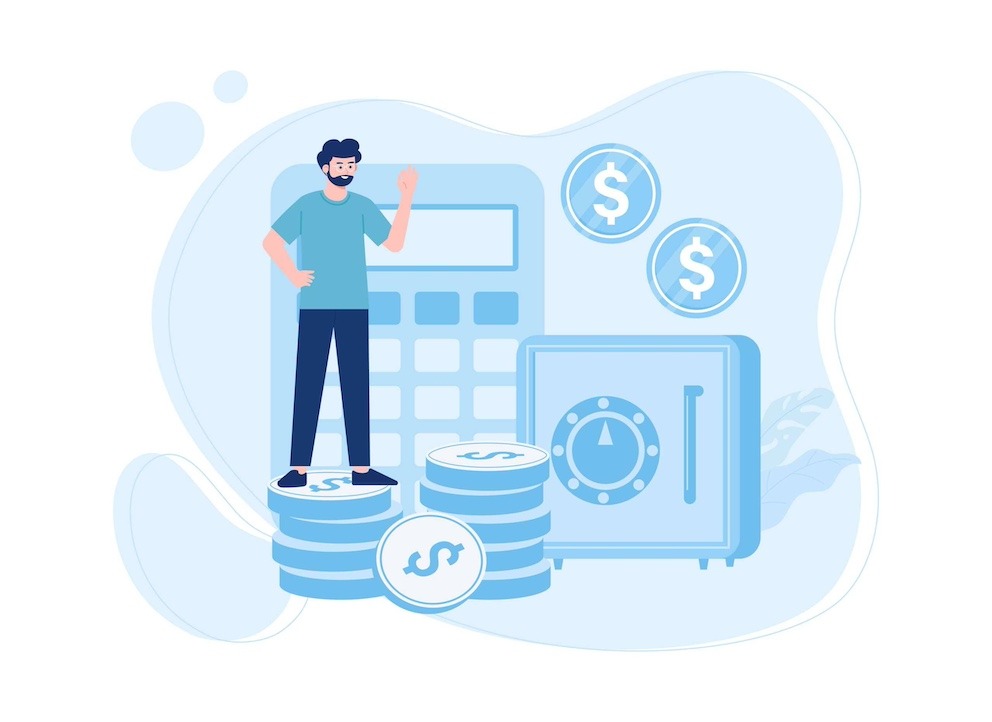Have you finished evaluating whether your Laravel application aligns with Mallow’s expertise? The next crucial part of your action item is to understand how much it would cost you to work on a Laravel project with Mallow. Budgeting for application development is crucial as it lays the foundation for a successful and sustainable project. Clear and realistic budgeting ensures that you can accurately assess the financial feasibility of your application idea, allocate resources appropriately, and avoid unexpected financial setbacks.
At Mallow, we empower our clients to make well-informed decisions. We achieve this by being clear about the costs associated with collaborating on a project with us. We believe that transparency is paramount, and as such, we provide comprehensive details about the financial aspects of the project. We recognise a well-informed client is better positioned to collaborate effectively, make strategic choices, and achieve optimal results in their application development.
This article provides a comprehensive overview of the expenses associated with developing a Laravel project with Mallow. By exploring these areas, you will attain a clearer understanding of the estimated expenses involved while working on a Laravel project with team Mallow.
What factors contribute to your application development cost?
Size of your application development team
The correlation between the number of team members and tasks should be proportionate to ensure efficient completion. Your decision regarding team size and structure significantly influences the overall application development cost. Hence, careful planning and task allocation are crucial for optimal results.
You need to have the right-sized application development team to promote a seamless development process and minimise additional expenses linked to knowledge transfer and other processes. By minimising disruptions, the time and cost during the application’s development can be effectively reduced.
Provided below is a table offering a rough framework for determining an appropriate team size aligned with the various types of tasks commonly addressed by development teams.
| Size of the team and capabilities | A Developer | 2-3 Developers | Squad – Includes 5-12 members | Multiple Squads |
| Minimal requirement (MVP) | ✔ | ✔ | Not Required | Not Required |
| Handling basic project complexities | ✔ | ✔ | Not Required | Not Required |
| Handling both frontend and backend dependencies | ✔ | ✔ | Not Required | Not Required |
| General maintenance-related works of an application (tasks like version upgrades, issue fixing, regular performance monitoring, managing third-party services) | ✔ | ✔ | Not Required | Not Required |
| Implementing multiple features and integrations simultaneously | ✖ | ✔ | ✔ | Not Required |
| Maintenance of an application with medium-level complexity in features and architecture | ✖ | ✔ | ✔ | Not Required |
| Maintenance of an application with high-level complexity in features and architecture | ✖ | ✖ | ✔ | ✔ |
| Sharp Deadlines/Short- spanned deployments | ✖ | ✖ | ✔ | ✔ |
| Working on multiple tech stacks simultaneously | ✖ | ✖ | Sometimes not enough | ✔ |
| Carrying multiple modules in an enterprise-level application | ✖ | ✖ | ✖ | ✔ |
| Handling applications demanding multiple and complex integrations | ✖ | ✖ | ✖ | ✔ |
| Handling enterprise-level systems which involve microservices and serverless architectures | ✖ | ✖ | ✖ | ✔ |
Types of resource
The overall development cost of your application depends majorly on the roles required to complete it successfully. The number of resources assigned in each role directly shapes the budget of your application development.
When forming a development team, you must enlist specialised resources tailored to your requirements.
Presented below are the different roles frequently employed in development projects, and the junctures at which their expertise becomes essential.
- If you’ve chosen to embark on creating a Laravel application, it becomes crucial to have a skilled developer as a part of your team. The nature of your application’s demands might necessitate the involvement of both front-end and back-end developers to manage both the user interface and the intricacies of business logic.
- For the purpose of easy scalability, peak performance and proficient hosting of your Laravel application, it is strongly advised to incorporate a DevOps team member into your project.
- If your progress is hindered by insufficient UI in your app, it’s advisable to seek assistance from a design expert. Their expertise can greatly elevate the overall UI and UX of your application.
- If your objective is to elevate the overall quality of your application, incorporating experienced quality analysts into your team can yield a substantial impact.
- Business analysts play a crucial role in bridging the gap between business needs and technical solutions. During the pre-development phase, they collaborate with your development team to ensure a clear direction. This involves defining the application’s purpose, functionalities, user flow, and problem-solving approach for the best outcome.
- If your aim is to foster cohesive teamwork, manage resources efficiently, mitigate risks, and implement effective planning, it’s highly advisable to include a project manager in your team. Having a project manager can facilitate seamless collaboration among your team members and streamline project execution. Their oversight ensures that goals are met, resources are optimised, and potential challenges are proactively addressed.
Take a look at the table below, which provides an overview of the various types of resources and capabilities to consider before including them in your development team.
| Types of Resource | Capabilities |
| Developer |
|
| DevOps |
|
| Designer |
|
| Quality Analyst |
|
| Business Analyst |
|
| Project Manager |
|
Level of expertise
Not all tasks across the application development journey necessitate the involvement of senior developers or associate team leads. Similarly, expecting a junior developer to spearhead an entire team is not practical.
Hence, categorising tasks according to the requisite skill levels for efficient completion is essential. By delineating your full requirements and assigning responsibilities based on individual expertise, you can harness your team’s potential to its maximum.
Anticipating that initial requirements might evolve during the process, having an initial work plan in place can mitigate uncertainties.
The table below offers a rough overview of how a developer’s proficiency aligns with their expertise level within your team.
| Levels of expertise for developers | Details of the proficiency |
| Junior |
|
| Mid-level |
|
| Senior-level |
|
| Associate Team Lead |
|
| Team Lead |
|
Breaking down the phases of application development
Let’s consider a scenario where you are developing a moderately complex application featuring 4-5 distinct features distributed across 3 modules. Various stages of the development process play a crucial role in shaping the final product. These stages encompass planning, design, development, testing, and deployment. The allocation of resources, both in terms of time and cost, varies across these stages. This breakdown provides a balanced perspective on the investment required for each stage of the application’s creation.
| Stage | Contribution (%) |
| Planning & Requirements | 5-10% |
| Design | 10-15% |
| Development | 30-40% |
| Testing & Issue fixes | 10-20% |
| Deployment | 5-10% |
| Maintenance & Updates | 10-15% |
| Scalability | 5-10% |
*Please note that the figures provided for the contribution to the overall application development cost and working hours are for general reference only, as the exact calculations can vary based on the unique aspects and specific requirements of your project.
Does the development cost vary based on the complexity of the application?
Yes, they do. Complexity is also a fundamental factor determining your application development’s overall cost. When we say complexity, we’re referring to various aspects, such as the number of modules required, types of third-party integrations, business algorithms, application architecture and other related factors.
The following information outlines how you can expect the overall cost figures to appear when you view your entire project requirements.
| Levels of Complexity | Cost | Average Timeframe |
| Basic (MVP) | $10,000-25,000 | < 3 months |
| Average | $30,000-50,000 | 3 months – 9 months |
| Enterprise-level solutions | Start from $65,000 | > 6 months |
*It’s important to note that the above figures are intended to provide a rough estimate of the potential cost range. The estimated cost only includes the expenses related to the services mentioned. It does not account for additional costs such as hosting providers like AWS, Heroku, Azure and third-party services like SendGrid, Twilio, and others. Remember that the estimated figures may change depending on your specific project requirements.
Factors that impact your application development costs beneath the surface
Apart from application development, there exist additional factors that demand your careful consideration and financial allocation. While building an application is undoubtedly important, comprehensive knowledge about the additional costs involved during application development is also necessary. A holistic budgeting approach paves the way for successful application development.
The below-mentioned details will give you an overview of the commonly influencing factors that are added on an additional basis to your application development cost.
- Usage of third-party services – Integrating with third-party systems or APIs might require more development hours than initially estimated due to compatibility issues, inadequate documentation, or unexpected complexities. Additional time spent on troubleshooting and adapting to integration changes can drive up costs.
- Security and compliance – Ensuring the application meets security and compliance standards may involve specialised expertise, security audits, vulnerability assessments, and potential legal consultations. These efforts are vital but can contribute to higher development costs, particularly when addressing unforeseen security vulnerabilities.
- Performance optimisation – Fine-tuning the application for optimal performance may involve revisiting and modifying code architecture, database structures, and algorithms. This process, though essential, can extend development timelines and require additional resources.
However, it’s important to acknowledge that while we can predict the optimisation of the application to a certain degree, the true outcome will only manifest once we are live and operational. - User experience refinement – Gathering user feedback and making iterative improvements to the user interface and experience often leads to better user satisfaction. However, these refinements might demand additional design and development efforts, increasing the overall development cost.
- Maintenance and updates – After the initial launch, ongoing maintenance, bug fixes, updates, and feature enhancements are essential for keeping the application functional and competitive. These post-launch activities contribute to the long-term cost of application ownership.
How much does hiring team members for a Laravel project cost?
By now, you have gained insights into various resource types, their capacities, the importance of the right expertise selection, and the methodology for defining an optimal team size for your application development.
The table below offers a comprehensive overview of the estimated costs of hiring resources from various services, each specialising in different areas of expertise. This will provide you valuable insights into the financial implications of engaging these resources, helping you gauge the potential expenses for your project based on your specific requirements and needs.
The Monthly Cost (In USD)
| Types of resources | Junior | Mid Level-1 | Mid Level-2 | Mid Level-3 | Senior | Associate Team Lead |
| Developer | $2000.00 | $2400.00 | $2800.00 | $3200.00 | $4000.00 | $5000.00 |
| DevOps | $2000.00 | $2400.00 | $3200.00 | $3800.00 | $5000.00 | $6000.00 |
| Quality Analyst | $1200.00 | $1400.00 | $1800.00 | $2000.00 | $2800.00 | $3200.00 |
| Designer | $1200.00 | $1400.00 | $1800.00 | $2000.00 | $2800.00 | $3200.00 |
| Business Analyst | $1600.00 | $1800.00 | $2000.00 | $2400.00 | $3200.00 | – |
| Team lead | $6000.00 | |||||
| Technical Lead/Technical Manager/Project Manager | $7000.00 | |||||
Your ultimate checklist to reduce your overall application development cost
✅ Define clear project goals, features, and scope boundaries. Document requirements comprehensively to minimise future changes.
✅ Agile development approach.
✅ Create prototypes or high-fidelity wireframes to validate concepts and designs early. Identify and resolve issues before development begins.
✅ Investing in automated testing processes can help catch bugs much earlier in the development process, saving time and resources that would otherwise be spent on manual testing.
✅ Set up CI/CD pipelines for automated code integration, testing, and deployment.
✅ Reduce human error and accelerate the development cycle by automating the possible processes.
✅ Opt for cloud infrastructure to minimise hardware costs and quickly scale resources. Pay for what you use, avoiding upfront investments.
✅ Prioritise essential features that deliver the most value to users.
✅ Delay good-to-have features to future releases to manage initial costs.
What does working on a Laravel project with Mallow look like?
After getting an overall idea about the costs associated with collaborating on a Laravel project with Mallow, your attention should shift towards gathering the details of the actual development process. This includes the different phases that your application will undergo, starting from starting to eventual completion. Equally important is the way through which updates and progress reports regarding the project are communicated to you.
For deeper insights into this collaborative venture, the article titled what does it look like to work on a Laravel project with Mallow, emerges as an invaluable asset, illuminating the finer points of the process and providing a holistic view of the dynamics within this partnership.
Still, wondering where your next step should be? Feel free to reach out to our team.
Your queries, our answers
Yes, we can continue developing your existing Laravel application. Please provide the current project details so we can assess and proceed. For more details, get in touch with our team.
No, we focus on custom Laravel solutions tailored specifically to your needs. We do not offer pre-built, off-the-shelf products.
Yes, we develop Laravel applications for various domains, including e-commerce, healthcare, finance, and more.
The cost varies based on the project's complexity and scope. For a basic MVP, costs generally range from $20,000 to $40,000 for web apps and $10,000 to $25,000 for mobile apps. For more advanced applications, costs can be higher. We offer a detailed cost breakdown tailored to your specific needs. To know more, check out our article on How much does it cost to work on a Laravel project with Mallow? and discover how we can build a strong partnership together.
The timeline depends on the project's complexity. A basic project may take a few weeks, while more complex applications could take several months.
Yes, we can align our working hours with your time zone to facilitate effective communication throughout the development process. For more details on how you can handle timezone differences efficiently, do check out our article on how to handle timezone differences while working with an offshore development team.
Mallow offers the following outsourcing models: Project-based outsourcing, Staff augmentation, & Dedicated development team (DDT)
Yes, we offer maintenance and support services to ensure your Laravel application remains up-to-date and functional.
Yes, you will own the intellectual property rights of your Laravel application upon project completion. Check out our article on why owning intellectual property rights while outsourcing your application is important.
The cost is influenced by several factors including the complexity of the project, the number of features required, and whether the application is for web or mobile. We provide a personalized estimate based on your project details.
We work with the latest stable versions of Laravel and can also support older versions if needed based on your project requirements. For more details check out our article on Laravel upgrade: when and how to transition to the latest version
Yes, we offer post-deployment support to address any issues and provide updates as needed.
To hire a Laravel developer from Mallow, you can contact us with your project requirements. We'll discuss your needs, suggest suitable developers or teams, and provide you with a proposal. Once the terms are agreed upon, we can start the development process.
Yes, you can hire a dedicated Laravel developer or a team of developers from Mallow. This allows you to have a dedicated resource working exclusively on your project, providing more control and flexibility over the development process.
To hire the right laravel developer for your project, check out this article on tips to hire the right Laravel developer.
Author
SathishPrabhu
Sathish is an accomplished Project Manager at Mallow, leveraging his exceptional business analysis skills to drive success. With over 8 years of experience in the field, he brings a wealth of expertise to his role, consistently delivering outstanding results. Known for his meticulous attention to detail and strategic thinking, Sathish has successfully spearheaded numerous projects, ensuring timely completion and exceeding client expectations. Outside of work, he cherishes his time with family, often seen embarking on exciting travels together.



